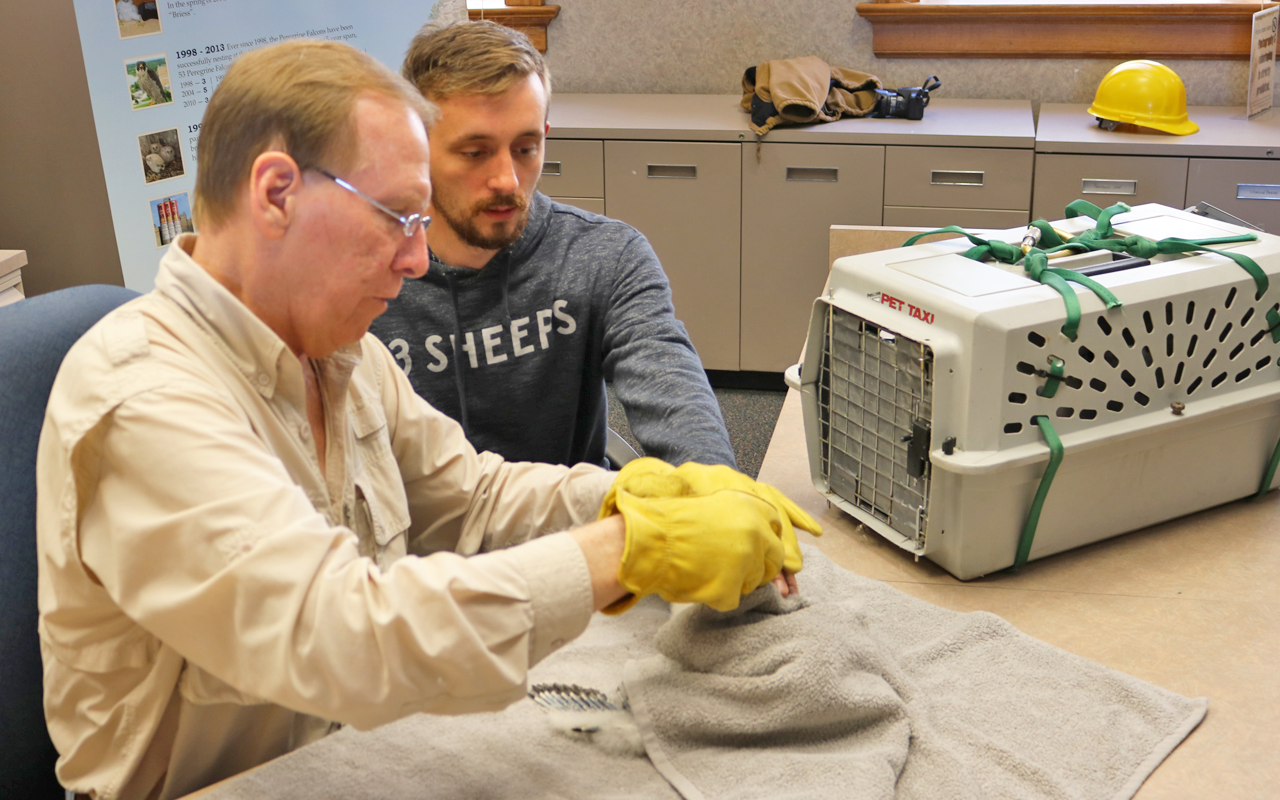
June 1 was a very special day, as it marked the 20th banding of Peregrine Falcons produced at the Manitowoc Nest Site and the 5th banding hosted by Briess. To mark this momentous banding, we decided it was only fitting to raise a glass and toast to the success of the Peregrine Falcon Recovery Efforts in Wisconsin. So we reached out to a few Wisconsin native breweries and loyal Briess customers to invite them to the banding and give them the honor of naming a falcon. The breweries who participated in this unique opportunity included Central Waters Brewing Co. of Amherst; O’So Brewing Co. of Plover; and 3 Sheeps Brewing Co. of Sheboygan.
One representative from each brewery assisted in the hands-on banding of an eyass, then named their chick. The breweries plan on sharing the progress of its eyass via social media and some are even brewing a special beer in honor of their falcon. Four eyasses were produced this year, and the fourth chick was named “Jimbob” by the Briess Technical Services Staff which helped band him, in memory of a co-worker who recently lost his life in a traffic accident.
| Brewery | Falcon Name | Gender |
|---|---|---|
| Central Waters | Millenium | Female |
| O’So | Alice | Female |
| 3 Sheeps | Sprinkles | Female |
| Briess | Jimbob | Male |
The Peregrine Falcon nest was installed in 1992, part of the Wisconsin Peregrine Falcon Recovery Program. Founded by Greg Septon, a former researcher at the Milwaukee Public Museum, the Recovery Program was developed to re-populate Peregrine Falcons. They were put on the U.S. Endangered Species list in 1969 after being almost eradicated by the pesticide DDT. After DDT was banned in 1972, it cleared the path for the re-population effort.
The Manitowoc elevator, acquired by Briess in 2014, was one of many Wisconsin locations that erected nesting boxes at the request of Mr. Septon. In 1998, it attracted its first pair of nesting Falcons. Since then, Peregrines have been successfully nesting in the elevator, producing more than 60 eyasses. Mr. Septon offers Briess nest care and instructions regarding the nesting Falcons. He also bands the young, which help Mr. Septon and volunteer observers track the birds. To share the nesting experience and provide a tool to help Septon track the birds, Briess installed a webcam in 2015. It streams to a webpage that is open to anyone wishing to watch the birds in action. Infrared lighting has since been added for 24/7 online viewing.
The Recovery Program and similar groups in other regions, with the assistance of organizations like Briess, are making progress. While the Peregrine population had been completely eradicated east of the Mississippi River by the late 1960s, today there are an estimated 1,650 breeding pairs in the U.S. and Canada.










